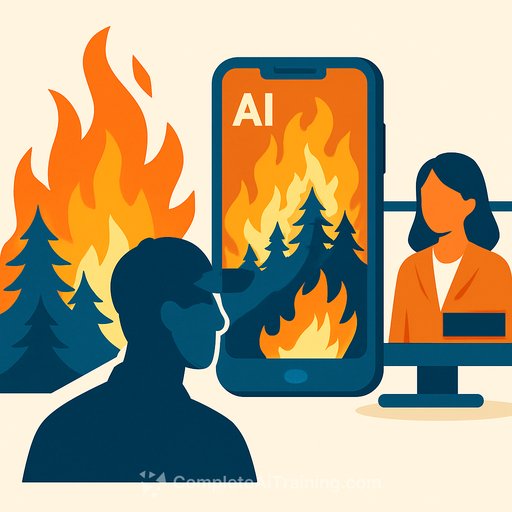BC Wildfire Service Warns Against AI-Generated Wildfire Images on Social Media
The B.C. Wildfire Service (BCWS) in Canada has issued a clear warning about the rise of AI-generated wildfire images spreading on social media. These fabricated visuals either exaggerate or downplay the scale and intensity of active fires, which can mislead the public during critical emergency situations.
In recent weeks, BCWS staff and concerned citizens reported multiple AI-created images that distort reality. Such misinformation poses real risks, as people often rely on social media updates to make urgent decisions about evacuation and safety.
Why Accuracy Matters in Crisis Communication
Fire information officer Jean Strong emphasized the importance of accurate information during emergencies. “People are making decisions about their families, their lives, and their properties based on some of this information,” Strong said. “It’s crucial that the information we consume about an emergency is as accurate as possible for everyone’s safety.”
To highlight the issue, BCWS shared examples of AI-generated wildfire images on its official social media accounts. They pointed out that even well-intentioned posts can unintentionally spread misinformation, causing confusion. The images often misrepresent terrain, fire size, or behaviour, potentially misleading anyone scrolling past into believing they are authentic.
The Real Impact: A Case from Vancouver Island
Greg Witt, president of Osprey Silviculture Operations—a company involved in wildfire suppression—fell victim to these AI fakes. Witt accidentally reposted AI-generated images alongside genuine photos of his teams battling the Wesley Ridge fire on Vancouver Island. “It just pissed me off,” Witt shared. “There’s enough real stuff going on that people should be concerned about. But there I was, I stumbled right into it.”
The Wesley Ridge fire was a serious event requiring evacuation orders for nearly 400 residents and the efforts of over 200 firefighters, air tankers, and helicopters. The fire has since been contained, but the incident illustrates how misinformation can easily spread even among professionals.
How PR and Communications Professionals Can Respond
- Verify before sharing: Always check wildfire updates directly from official sources like BC Wildfire Service or trusted local news outlets.
- Educate your audience: Use your communication channels to inform the public about the risks of AI-generated misinformation, especially during emergencies.
- Promote official channels: Encourage followers and clients to rely on verified information sources for safety-critical news.
With AI tools becoming more accessible, the potential for misinformation increases. PR professionals must stay vigilant and proactive to maintain public trust and safety during crises.
For those interested in understanding AI’s impact on media and communications, Complete AI Training offers courses that cover AI tools and their implications for communication roles.
Your membership also unlocks:






